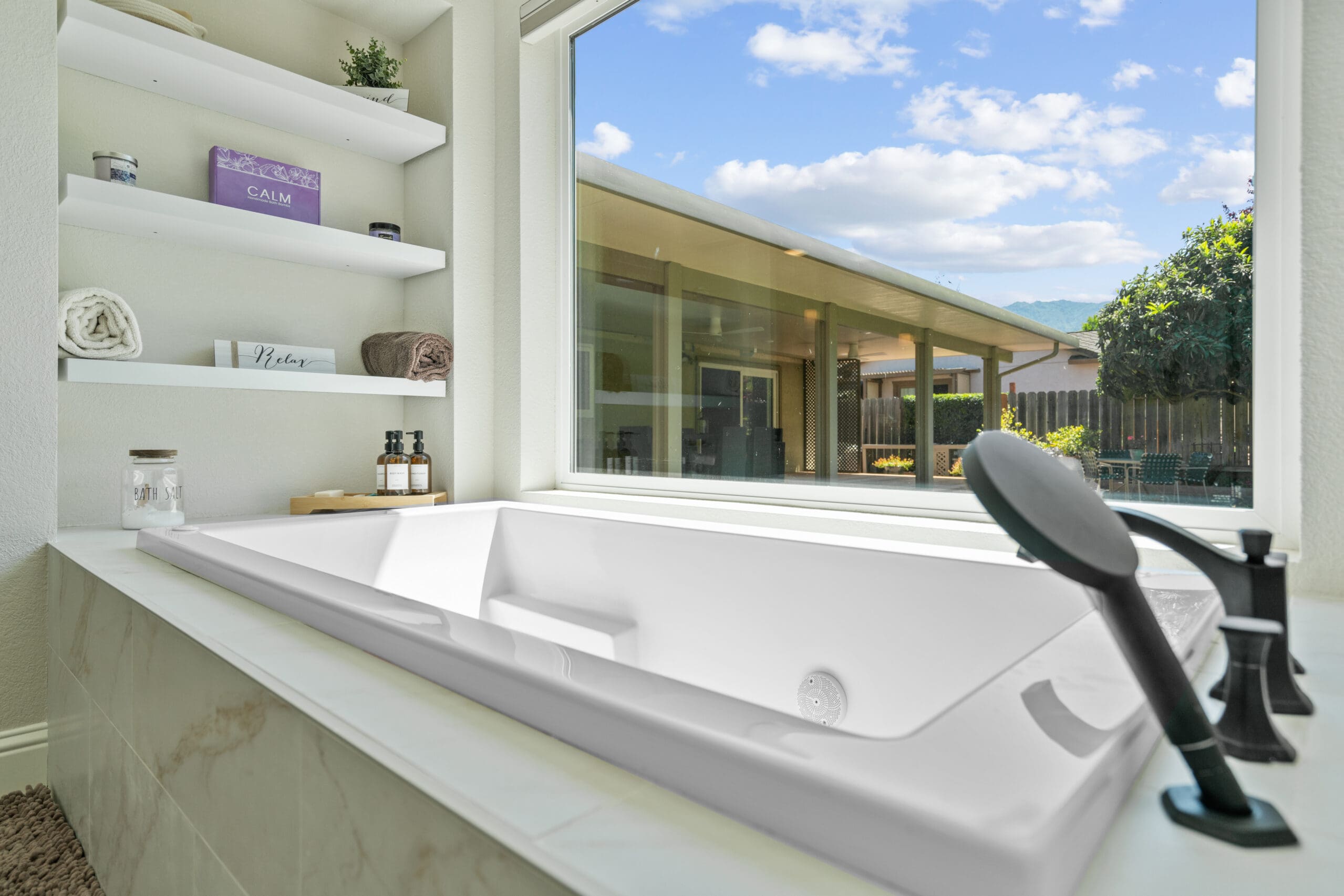Why We’re All Bolting Down Our Bay Area Dream Homes
So, we’re sitting in our favorite coffee shop in Walnut Creek, the sun is out, and life is good. We love our homes here in the Bay Area. We’ve poured our hearts into them—maybe with a kitchen remodeling project or a bathroom renovation that finally got rid of those avocado-green tiles. But then, the room gives a little shudder. Not from the espresso machine. It’s a tremor. We share a knowing look. It’s not a matter of if, but when. And suddenly, that luxury home renovation we’ve been dreaming about feels a little less important than making sure the house is still standing to enjoy it.
That’s the reality of living here, right? We’re in earthquake country. And more of us are realizing that the smartest home improvement we can make isn’t always the most glamorous. It’s the one that protects everything we’ve built, literally. Let’s talk about why earthquake retrofits have become the Bay Area’s must-do project.
What Exactly Is an Earthquake Retrofit, Anyway?
Good question. It sounds technical, but the concept is simple. An earthquake retrofit is a series of structural reinforcements we make to our homes to help them withstand the shaking from a seismic event. Think of it as giving your house a fighting chance.
Many of our beautiful homes here in Oakland, Danville, and across the Bay Area were built before modern seismic codes. They often have cripple walls in the crawl space that can buckle, or they aren’t properly bolted to their foundations. During a quake, this can cause the house to slide off its foundation. Not a pretty picture, especially after you’ve just finished a custom remodel.
A retrofit addresses these weaknesses. It’s the unsung hero of home remodeling—the project you do so all your other projects don’t end up in a heap on the lawn.
The Real Reasons We’re Investing in Safety (It’s Not Just Fear)
Sure, peace of mind is the big one. But when we talk to homeowners, we find their reasons are surprisingly practical.
- Protecting Our Financial Investment: Our homes are likely the largest financial asset we have. A whole house remodeling after a major quake is a financial nightmare. A retrofit is a fraction of that cost and acts as a fantastic insurance policy for your equity.
- Safeguarding Our Personal Sanctuaries: It’s not just about the drywall and two-by-fours. It’s about the photos, the heirlooms, the custom built-in shelves you spent a weekend assembling. A retrofit protects the life inside the house.
- Staying in Our Homes: After a major disaster, buildings that are red-tagged as unsafe can’t be occupied. Do we really want to be fighting for a FEMA trailer or a hotel room? A proper retrofit significantly increases the odds that we can stay in our own home, with our own stuff, after the shaking stops.
- It’s Surprisingly Affordable (No, Really!): People often assume the price of a retrofit is astronomical. Compared to a home addition or a kitchen remodeling project, it’s often far less expensive. The cost can vary, but the investment is typically a smart one for the protection it offers.
The Nuts and Bolts: What Actually Happens During a Retrofit?
Alright, let’s get into it. What does a general contractor actually do during a retrofit? While every home is unique, most retrofits in our area focus on a few key areas.
The Main Components of a Standard Retrofit:
- Foundation Bolting: This is the big one. The house is literally bolted to its concrete foundation. If the house can’t slide, you’ve already won half the battle.
- Cripple Wall Bracing: Those short, wood-stud walls in the crawlspace under your first floor (cripple walls) are often too weak to handle side-to-side shaking. We strengthen them by adding plywood sheathing, turning them into a solid, shear-resistant wall.
- Soft-Story Retrofits: Got a garage with a living space above it? Or large windows on the ground floor? These are “soft stories” and are notoriously vulnerable. This involves adding sturdy steel frames or walls to prevent a collapse.
- Gas Valve Securing: We add an automatic seismic gas shut-off valve. This is a huge safety win, as it prevents gas leaks and potential fires after a quake—a primary cause of major damage.
Here’s a quick breakdown of common vulnerabilities and their solutions:
| If Your Home Has This… | It Might Need This… | Why It Matters |
|---|---|---|
| A crawl space with short, wooden “cripple” walls | Plywood sheathing & framing connectors | Prevents the house from collapsing into or off its foundation. |
| A garage with living space above it | Steel moment frames or reinforced walls | Stops the “soft story” from collapsing during violent shaking. |
| A house built before the 1960s | Foundation bolting | Older homes were often just gravity-set on the foundation, not bolted. |
| A conventional main gas valve | An automatic seismic shut-off valve | Drastically reduces the risk of post-earthquake fire. |
How This Fits Into Your Bigger Home Renovation Dreams
Now, you might be thinking, “This is all very practical, but my heart is set on a bathroom remodeling project.” IMO, that’s the perfect time to think about a retrofit!
It’s a classic case of “while you’re at it.” If you’re already planning a major home renovation—like a whole house remodeling, adding a second story, or even a basement remodel—it is the absolute best time to integrate the seismic work.
The logistics are already in motion. You have a remodeling company on site, permits are being pulled, and the walls might already be open. Tackling the retrofit as part of the larger project can save you money on mobilization and overall labor cost. It’s the ultimate in smart, forward-thinking expert home improvement. Why do the pretty stuff if the foundation isn’t secure?
This is a philosophy we live by at EA Home Builders in Contra Costa County. Whether a client comes to us for a luxury home renovation in Danville or a basement remodel in Walnut Creek, we always have a conversation about the structure first. It just makes sense.
Okay, I’m Convinced. How Do I Find the Right Contractor?
This is the most important step. You don’t want just anyone poking around your foundation. This is specialized work.
Look for a specialist, not just a handyman. You need a general contractor with specific experience in seismic retrofitting. Search for terms like “earthquake retrofit contractor near me” or “basement contractors” who list retrofits as a core service.
Read the reviews. And I mean, really read them. Look for patterns. Do the reviews mention professionalism, clear communication, and thoroughness? Are there before-and-after photos of retrofit work? This is where you separate the true pros from the rest.
Get multiple quotes. The cost can vary, so get at least three detailed bids. But a word of caution: if one bid is dramatically lower than the others, ask yourself why. This isn’t an area to choose the cheapest option; you’re buying expertise and peace of mind.
And hey, while you’re searching for the nearest or closest expert, we humbly suggest you give EA Home Builders a look. As a local home renovation contractor based right here in Contra Costa, this is our community too. We eat at the same restaurants and worry about the same tremors. We’ve built our business on being the expert home improvement partner you can trust for both the foundational stuff and the finish work. We’d be happy to provide a consultation and show you why our reviews speak for themselves.
Your Earthquake Retrofit Questions, Answered
We get it, this is a big decision. Let’s tackle some of the most common questions we hear.
1. How much does an earthquake retrofit actually cost?
This is the number one question, and the honest answer is: it depends. The price is influenced by the size of your home, the type of foundation, crawl space accessibility, and the scope of work needed. For a standard bolting and bracing retrofit on a single-family home, you’re often looking at a range that is significantly less than the cost of a typical kitchen remodeling project. The best way to know? Get a site-specific quote from a qualified general contractor.
2. Will this project require me to move out of my house?
Usually, no! For most standard retrofits, you can absolutely stay in your home. The work is primarily confined to the crawl space, basement, and garage. It can be noisy and a bit disruptive, but it’s not like a whole house remodeling where you’d need to pack up and leave. Your contractor should walk you through what to expect.
3. My house was built in the 1980s. Do I still need a retrofit?
It’s a great question. Building codes have improved over time, so a home from the 80s is likely in better shape than one from the 40s. However, codes are minimum standards. A custom retrofit can often provide protection that goes beyond code, especially for larger quakes. It’s always worth having an evaluation. An expert home improvement pro can assess your specific vulnerabilities and tell you if your home is already a champ or if it needs a little extra training.
The Bottom Line: It’s an Investment in Your Peace of Mind
Look, we love a beautiful bathroom renovation as much as the next person. A new kitchen? Sign us up. But those projects are about enhancing our lifestyle. An earthquake retrofit is about securing it.
It’s the responsible, smart foundation for every other home remodeling dream we have. It protects our families, our finances, and our futures. So, let’s make a pact. Let’s not wait for “the big one” to realize we should have bolted it down. Let’s be the proactive homeowners who looked a little shaking in the eye and said, “Not today.”
When you’re ready to have that conversation, to get a real assessment of what your home needs, give a local specialist a call. And if you’re here in the East Bay, we’d be honored if you considered EA Home Builders. Let’s make sure your sanctuary is safe and sound, so you can get back to planning that dream kitchen remodeling project with complete peace of mind. FYI, it’s one of the best feelings in the world






